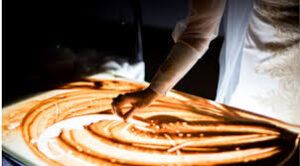
When we think of animation, images of beloved Disney characters often dance in our minds—Mickey Mouse’s playful antics or the enchanting worlds of Pixar. But there’s a vibrant tapestry of animation beyond the House of Mouse that deserves our attention! From the bold brushstrokes of Japanese anime to the intricate puppetry found in Eastern Europe, global storytelling through movement offers a kaleidoscope of styles and techniques waiting to be explored. Join us on an exhilarating journey as we dive into lesser-known animation traditions from around the world, celebrating their unique artistry and cultural significance.
Hungary’s Rotoscope-Driven Surrealism
Hungary doesn’t usually pop up on the animation radar, but it should. Back in the 1970s and ’80s, Hungarian studios were experimenting with rotoscoping (tracing over live-action footage) to create these haunting, almost dreamlike animations. Think surreal visuals layered with philosophical commentary—kind of like if Salvador Dalí had directed a cartoon. One standout example? “Fehérlófia” (Son of the White Mare), a psychedelic retelling of Hungarian folklore with swirling colors and mind-bending transitions. It’s less of a movie and more of a visual fever dream—in the best way possible.
China’s Ink Wash Animation
If you’ve never seen Chinese ink wash animation, prepare to be blown away. This style blends traditional Chinese ink painting techniques with modern animation, creating something that’s equal parts elegant and emotive. This art form took off in the mid-20th century with short films like The Cowboy’s Flute and Feelings of Mountains and Waters, which look like living scroll paintings. They’re quiet, poetic, and often dialogue-free—just flowing ink lines and expressive music telling the story. It’s not flashy, but that’s what makes it special. It’s the kind of animation that feels like meditation.
India’s Sand Animation
 Sand animation is exactly what it sounds like—artists create stories by shaping sand on a backlit surface, frame by frame. While this style has popped up in different countries, Indian animators have brought a particularly poetic and expressive touch to it. Stories often draw on mythology and classical themes, with each swirling grain helping paint tales that are both timeless and tactile.
Sand animation is exactly what it sounds like—artists create stories by shaping sand on a backlit surface, frame by frame. While this style has popped up in different countries, Indian animators have brought a particularly poetic and expressive touch to it. Stories often draw on mythology and classical themes, with each swirling grain helping paint tales that are both timeless and tactile.
It’s a niche within a niche, but it’s gaining global attention, especially through live performances where the animation happens in real-time.
Estonia’s Stop-Motion Oddities
Estonia has quietly built a reputation for crafting weird and wonderful stop-motion animation. Estonian animators often lean into darker, offbeat storytelling—with lots of handmade textures and characters that look like they were pulled from a dusty attic. One example is Priit Pärn’s work, which mixes grotesque humor with social satire. The animation is intentionally janky, the characters are exaggerated, and the vibe is both uncomfortable and brilliant. If Wes Anderson went on a week-long bender and decided to make a puppet show about existential dread, it would probably look like Estonian stop-motion.
South Africa’s Mixed-Media Mashups
In South Africa, animation is often used as a tool for cultural expression and political commentary. What makes the style stand out is how many artists blend traditional hand-drawn methods with digital tools, collage, and even graffiti influences. The result? Animation that feels raw, fresh, and deeply personal. Studios like Triggerfish are starting to bring more attention to the region, but the indie scene is where the boldest voices live. Animation isn’t just about polished 3D or mass-market cartoons—it’s an art form that changes shape depending on the culture, tools, and vision behind it. These niche animation styles from around the world prove that creativity thrives in unexpected corners, and sometimes the most magical stories come from places you’d never think to look.



